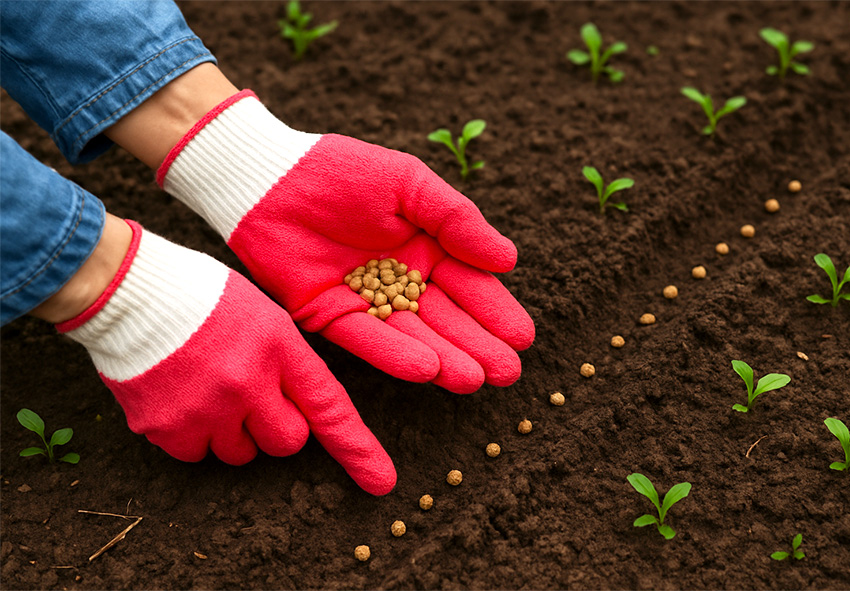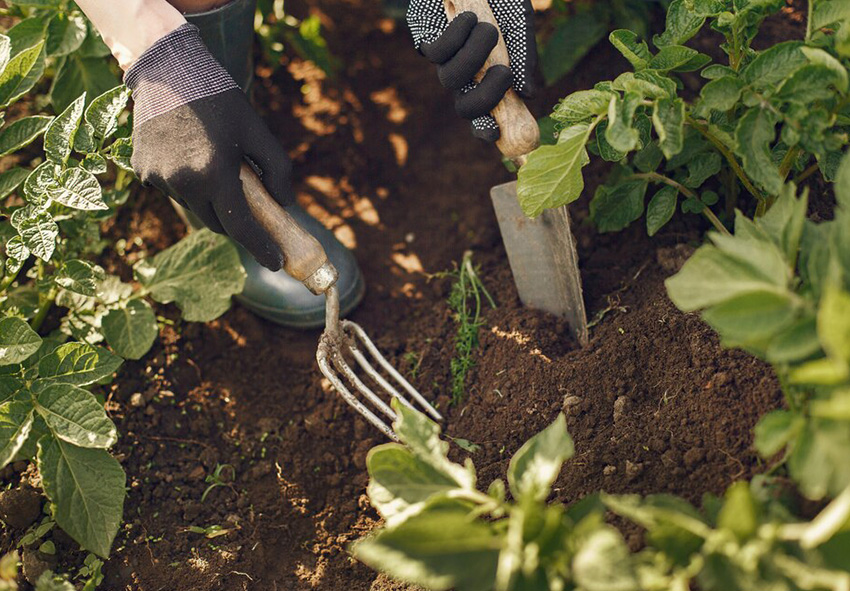Autumn isn’t just for raking leaves and sipping warm drinks — it’s also a prime time to plant a variety of nutrient-rich vegetables. Cool-season crops thrive in lower temperatures and can give you a fresh harvest well into winter. In this guide, we’ll cover the best vegetables to plant in autumn, how to care for them, and tips for maximizing your seasonal yield. Our gardening blog is a perfect place to find all the information you need!
Why Plant Vegetables in Autumn?

Planting vegetables in fall offers several advantages that summer gardening can’t always deliver. The cooler weather reduces the risk of pests and diseases, making it easier to manage your crops. Additionally, many plants grow better in mild conditions and produce more flavorful yields.
Benefits of Cool-Season Gardening
Cool-season gardening offers unique advantages that make autumn an ideal time to grow certain vegetables. With lower temperatures and fewer pests, your garden can thrive with less maintenance. Below are some key benefits of planting vegetables in the cooler months:
- Fewer Pests and Diseases: Cooler weather reduces the activity of common garden pests like aphids and caterpillars. Many plant diseases also subside in the fall, leading to healthier crops.
- Improved Flavor and Texture: Vegetables like kale, carrots, and broccoli develop sweeter flavors in cool weather. Crisp textures and tender leaves are common in autumn-harvested produce.
- More Comfortable Gardening Conditions: Working in the garden is more enjoyable in cooler temperatures. There’s less risk of heat exhaustion or sunburn compared to summer gardening.
- Better Soil Moisture Retention: Fall rains help maintain consistent soil moisture, reducing watering needs. Plants are less likely to suffer from drought stress.
- Extended Harvest into Winter: Many cool-season crops tolerate light frost and continue producing into late autumn. Some, like spinach and mache, can even overwinter in milder climates.
Extending the Growing Season
Fall planting allows you to extend your garden’s productivity beyond summer. Succession planting — sowing new seeds right after harvesting summer crops — can keep your beds active. Using row covers or cold frames helps protect tender seedlings and allows them to thrive despite dropping temperatures.
Top Vegetables to Plant in Autumn
Many cool-season crops can handle early frosts and thrive in autumn conditions. Choosing the right plants can give you delicious produce through late fall and even into early winter.
Leafy Greens
Leafy greens such as kale, spinach, and lettuce are staples of fall gardens. They germinate quickly in cool soil and can handle light frosts without damage. Regular harvesting promotes continuous growth for multiple yields.
Root Vegetables
Carrots, beets, radishes, and turnips all grow well in cooler weather and develop better flavor when matured in cold soil. These vegetables require well-drained, loose soil for healthy root development. Sow them directly into the ground and thin them out as they grow.
Brassicas
Brassicas like broccoli, cabbage, and cauliflower are robust fall crops. They benefit from being started indoors and transplanted into the garden once temperatures begin to cool. These vegetables are frost-tolerant and can survive sudden cold snaps.
Alliums
Alliums such as garlic, onions, and shallots are long-season crops that begin in fall and are harvested the following summer. Plant individual cloves or sets in well-drained soil with full sun exposure. Mulch heavily to protect them over winter.
Legumes
Cool-weather legumes like peas and fava beans are excellent additions to a fall vegetable garden. These nitrogen-fixing plants also improve soil fertility for the next growing season. Sow them early enough to mature before hard frost.
Preparing Your Garden for Autumn Planting

A successful autumn garden starts with well-prepared soil and thoughtful planning. Taking the time to condition your garden beds and map out your planting strategy increases your chances of a robust fall harvest.
Soil Preparation
Add compost or well-rotted manure to your beds to replenish nutrients depleted during summer. Break up compacted soil and remove any weeds or debris. A soil test can help determine whether pH adjustments are needed for specific crops.
Planting and Spacing
Autumn vegetables grow slower, so it’s essential to give them adequate spacing to avoid overcrowding. Consider crop rotation to prevent disease buildup. Companion planting can also help you maximize space and deter pests naturally.
Caring for Autumn-Planted Vegetables
Autumn vegetables require consistent care to thrive as temperatures fluctuate. Monitoring water, protecting from frost, and staying ahead of pests are all critical components of your fall gardening strategy. Here are main tips for your garden:
- Watering and Mulching: Even though the weather is cooler, your vegetables still need regular watering. Aim for deep watering 1–2 times per week depending on rainfall. Apply mulch to conserve soil moisture, suppress weeds, and insulate roots against the cold.
- Frost Protection: Early frosts can damage tender young plants if unprotected. Use row covers, cloches, or low tunnels to create a buffer from cold air. Always keep an eye on your local frost forecast and act quickly to safeguard your crops.
- Pest Monitoring: Cooler weather reduces pest activity, but it doesn’t eliminate it. Watch for cabbage worms, aphids, and root maggots. Use row covers and organic deterrents to protect your plants.
Harvesting Tips and Storage
Knowing when and how to harvest your autumn crops ensures maximum flavor and nutrition. Some vegetables are better after a frost, while others should be picked early for best texture.
When to Harvest Fall Vegetables
Leafy greens can be harvested as baby leaves or allowed to mature, depending on your preference. Root vegetables like carrots and beets are ready when their tops reach 1–2 inches across. Always harvest before a deep freeze to avoid crop loss.
Storage and Preservation
Some root crops can be stored in the ground under mulch until needed. Others, like garlic or onions, need curing before long-term storage. Refrigeration, pickling, or freezing are also great options to preserve your autumn bounty.
Start from Seed vs Transplant

Choosing whether to start your autumn vegetables from seed or transplants can significantly impact your harvest timing and plant health. Each method has its own benefits, depending on the crop type and the length of your fall growing season. Here’s a quick guide to help you decide what’s best for your autumn garden.
Direct-Sow from Seed:
- Ideal for fast-growing crops like radishes, spinach, lettuce, and carrots.
- Seeds are sown directly into the garden, making it a simple and budget-friendly option.
- Best used when there’s still enough warm weather to allow proper germination.
Use Transplants:
- Recommended for slower-growing vegetables like broccoli, kale, and cauliflower.
- Helps get a head start, especially in regions with a shorter fall season.
- Reduces vulnerability to early frost and pest pressure on young seedlings.
Combination Approach:
- Combine both methods to optimize your space and time.
- Start some crops indoors while sowing others directly outdoors.
- This staggered method allows for a more continuous harvest and better use of limited space.
Conclusion
Planting vegetables in autumn allows you to extend your harvest season and enjoy fresh produce long after summer ends. With the right crops, care, and frost protection, your fall garden can be just as rewarding as your spring one. So grab your gloves and start planting — it’s time to grow your autumn garden!
Frequently Asked Questions (FAQs) about Planting Vegetables in Autumn
1. What vegetables grow best in autumn?
Cool-season vegetables such as kale, spinach, lettuce, radishes, carrots, and broccoli thrive when planted in autumn. These crops tolerate lower temperatures and grow well in moist, cooler soil conditions. They also tend to have a sweeter flavor when harvested after a light frost.
2. Can I order vegetables to plant in autumn in your online store?
Yes, you can! Our online store Dutch-bulbs.com offers a wide selection of vegetables ideal for autumn planting, including popular options like onions, which thrive in cooler weather. We also provide detailed planting instructions to help you get started with confidence.
3. When should I start planting vegetables in the fall?
You should begin planting your fall garden about 6–8 weeks before the first expected frost date. This allows enough time for crops to mature before freezing temperatures arrive. Check your local frost calendar to determine the optimal planting window for your region.
4. Can I start autumn vegetables from seed or should I transplant?
Both methods work, but transplanting gives a head start to slower-growing plants like broccoli or cabbage. Quick-growing vegetables like radishes and spinach are perfect for direct seeding in fall. Transplants are especially useful in areas with a shorter fall growing season.
5. How do I protect autumn vegetables from unexpected frost?
Use row covers, cold frames, or cloches to protect tender crops. Mulching also helps regulate soil temperature and moisture, shielding roots from sudden temperature drops. Monitoring the weather forecast can help you act quickly before a cold snap.
Published: 15.08.2025
